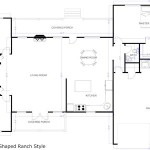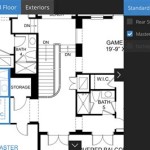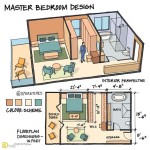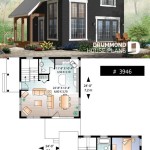
A dealer floor plan is a financing arrangement between a vehicle dealership and a lender, whereby the lender provides the dealership with funds to purchase vehicles for its inventory. This type of financing allows dealerships to maintain a diverse selection of vehicles on their lot, enabling them to meet the varying needs of customers.
For example, a car dealership may enter into a dealer floor plan agreement with a bank. The bank will advance funds to the dealership, which will then use these funds to purchase vehicles from manufacturers or wholesalers. The vehicles are held on the dealership’s lot as collateral for the loan, and the dealership pays interest on the outstanding balance.
In the following sections, we will explore the benefits and challenges of dealer floor plans, as well as the various factors that dealerships should consider when selecting a lender and negotiating the terms of the agreement.
Here are 8 important points about dealer floor plans:
- Financing for vehicle inventory
- Allows for diverse vehicle selection
- Vehicles serve as loan collateral
- Dealership pays interest on loan
- Improves customer satisfaction
- Can increase sales volume
- Requires careful financial management
- Multiple lenders to choose from
Dealer floor plans can be a valuable tool for dealerships, but it is important to understand the terms and conditions of the agreement before entering into one.
Financing for vehicle inventory
Dealer floor plans provide dealerships with the financing they need to purchase vehicles for their inventory. This is essential for dealerships to maintain a diverse selection of vehicles that meets the varying needs of customers. Without floor plan financing, dealerships would have to purchase vehicles outright, which would tie up a significant amount of their capital and limit their ability to offer a wide range of vehicles.
Floor plan financing allows dealerships to purchase vehicles from manufacturers or wholesalers and hold them on their lot as collateral for the loan. The dealership then pays interest on the outstanding balance of the loan. This arrangement allows dealerships to maintain a larger inventory of vehicles than they would be able to if they had to purchase the vehicles outright.
In addition to providing financing for vehicle inventory, dealer floor plans can also help dealerships improve their cash flow. By spreading the cost of purchasing vehicles over time, dealerships can avoid large upfront payments that can strain their finances. This can help dealerships to maintain a healthy cash flow and invest in other areas of their business, such as marketing and customer service.
Overall, dealer floor plans are an important tool for dealerships to finance their vehicle inventory and improve their cash flow. By carefully managing their floor plan financing, dealerships can maximize their profitability and provide customers with a wide selection of vehicles to choose from.
Allows for diverse vehicle selection
One of the key benefits of dealer floor plans is that they allow dealerships to maintain a diverse selection of vehicles. This is important for several reasons. First, it allows dealerships to meet the varying needs of their customers. Customers have different preferences when it comes to vehicles, and they want to be able to choose from a wide range of options. A dealership with a diverse inventory is more likely to have the vehicle that a customer is looking for.
Second, a diverse inventory can help dealerships to attract new customers. Customers are more likely to visit a dealership that has a wide selection of vehicles to choose from. This is because they are more likely to find the vehicle that they are looking for at a dealership with a diverse inventory.
Third, a diverse inventory can help dealerships to increase their sales volume. Customers are more likely to purchase a vehicle from a dealership that has a wide selection of vehicles to choose from. This is because they are more likely to find the vehicle that they are looking for at a dealership with a diverse inventory.
Finally, a diverse inventory can help dealerships to improve their customer satisfaction. Customers are more likely to be satisfied with a dealership that has a wide selection of vehicles to choose from. This is because they are more likely to find the vehicle that they are looking for at a dealership with a diverse inventory.
Overall, dealer floor plans allow dealerships to maintain a diverse selection of vehicles, which can help them to meet the needs of their customers, attract new customers, increase their sales volume, and improve their customer satisfaction.
In addition to the benefits listed above, dealer floor plans can also help dealerships to manage their inventory more effectively. By carefully managing their floor plan financing, dealerships can ensure that they have the right mix of vehicles in stock to meet the demands of their customers.
Vehicles serve as loan collateral
As mentioned earlier, vehicles purchased through dealer floor plans serve as collateral for the loan. This means that the lender has a security interest in the vehicles until the loan is repaid in full. If the dealership defaults on the loan, the lender can repossess the vehicles and sell them to recover the outstanding balance of the loan.
The lender’s security interest in the vehicles is typically perfected by filing a financing statement with the appropriate government agency. This filing gives the lender priority over other creditors in the event that the dealership defaults on the loan and the vehicles are sold.
The value of the vehicles serving as collateral is important for both the dealership and the lender. For the dealership, it is important to ensure that the value of the vehicles is sufficient to cover the outstanding balance of the loan. If the value of the vehicles declines, the dealership may be required to provide additional collateral or make additional payments on the loan.
For the lender, it is important to ensure that the value of the vehicles is sufficient to cover the outstanding balance of the loan in the event that the dealership defaults. The lender will typically require the dealership to maintain a certain level of inventory and to provide periodic financial statements to ensure that the value of the vehicles is sufficient.
Overall, the fact that vehicles serve as loan collateral is an important aspect of dealer floor plans. It is important for both the dealership and the lender to understand the implications of this and to take steps to protect their interests.
In addition to the points discussed above, it is also important to note that the lender may require the dealership to obtain insurance on the vehicles serving as collateral. This insurance will protect the lender in the event that the vehicles are damaged or destroyed.
Dealership pays interest on loan
As mentioned earlier, the dealership pays interest on the outstanding balance of the loan. The interest rate is typically based on the prime rate, which is the interest rate that banks charge their most creditworthy customers. The interest rate on a dealer floor plan loan will typically be higher than the prime rate, but it will vary depending on the dealership’s creditworthiness and the terms of the loan.
The dealership’s interest payments are typically made on a monthly basis. The amount of the interest payment will vary depending on the outstanding balance of the loan and the interest rate. The dealership can reduce its interest payments by paying down the loan balance more quickly.
- Interest is a major expense for dealerships. The interest payments on a dealer floor plan loan can be a significant expense for dealerships. Dealerships should carefully consider the interest rate and terms of the loan before entering into a dealer floor plan agreement.
- Dealerships can reduce their interest payments by paying down the loan balance more quickly. Dealerships can reduce their interest payments by making extra payments on the loan or by paying off the loan early. This can help dealerships to save money on interest and improve their cash flow.
- Dealerships should shop around for the best interest rate. There are a number of different lenders that offer dealer floor plan loans. Dealerships should shop around for the best interest rate and terms before entering into a loan agreement.
- Dealerships should consider the total cost of the loan. When comparing dealer floor plan loans, dealerships should consider the total cost of the loan, including the interest rate, fees, and other costs.
Overall, the dealership’s interest payments on the dealer floor plan loan are an important consideration. Dealerships should carefully consider the interest rate and terms of the loan before entering into a dealer floor plan agreement.
Improves customer satisfaction
One of the key benefits of dealer floor plans is that they can help dealerships to improve customer satisfaction. This is because dealer floor plans allow dealerships to maintain a diverse selection of vehicles, which means that customers are more likely to find the vehicle that they are looking for.
In addition, dealer floor plans can help dealerships to provide better customer service. When a dealership has a diverse inventory, they are better able to meet the needs of their customers. This can lead to increased customer satisfaction and loyalty.
Here are some specific ways that dealer floor plans can help dealerships to improve customer satisfaction:
- Reduced wait times: When a dealership has a diverse inventory, customers are less likely to have to wait for the vehicle that they want. This can lead to increased customer satisfaction and loyalty.
- Increased sales: When a dealership has a diverse inventory, they are more likely to have the vehicle that a customer is looking for. This can lead to increased sales and profits for the dealership.
- Improved customer service: When a dealership has a diverse inventory, they are better able to meet the needs of their customers. This can lead to increased customer satisfaction and loyalty.
- Positive word-of-mouth: When customers have a positive experience at a dealership, they are more likely to tell their friends and family about it. This can lead to increased sales and profits for the dealership.
Overall, dealer floor plans can be a valuable tool for dealerships to improve customer satisfaction. By carefully managing their floor plan financing, dealerships can ensure that they have the right mix of vehicles in stock to meet the demands of their customers.
In addition to the points discussed above, it is also important to note that dealer floor plans can help dealerships to build relationships with their customers. When customers know that a dealership has a diverse inventory and is committed to providing excellent customer service, they are more likely to return to that dealership for future purchases and service.
Can increase sales volume
One of the key benefits of dealer floor plans is that they can help dealerships to increase their sales volume. This is because dealer floor plans allow dealerships to maintain a diverse selection of vehicles, which means that customers are more likely to find the vehicle that they are looking for.
In addition, dealer floor plans can help dealerships to close sales more quickly. When a dealership has a diverse inventory, they are more likely to have the vehicle that a customer wants in stock. This can lead to shorter sales cycles and increased sales volume.
Here are some specific ways that dealer floor plans can help dealerships to increase their sales volume:
- Increased customer traffic: When a dealership has a diverse inventory, they are more likely to attract customers. This is because customers are more likely to visit a dealership that has the vehicle that they are looking for.
- Reduced lost sales: When a dealership has a diverse inventory, they are less likely to lose sales to other dealerships. This is because customers are more likely to find the vehicle that they want at a dealership with a diverse inventory.
- Increased sales conversions: When a dealership has a diverse inventory, they are more likely to convert customers into buyers. This is because customers are more likely to purchase a vehicle from a dealership that has the vehicle that they want.
- Improved customer loyalty: When customers have a positive experience at a dealership, they are more likely to return to that dealership for future purchases. This can lead to increased sales volume and profits for the dealership.
Overall, dealer floor plans can be a valuable tool for dealerships to increase their sales volume. By carefully managing their floor plan financing, dealerships can ensure that they have the right mix of vehicles in stock to meet the demands of their customers.
In addition to the points discussed above, it is also important to note that dealer floor plans can help dealerships to build relationships with their customers. When customers know that a dealership has a diverse inventory and is committed to providing excellent customer service, they are more likely to return to that dealership for future purchases and service.
Requires careful financial management
Dealer floor plans require careful financial management in order to be successful. Dealerships need to carefully manage their inventory levels, cash flow, and profitability in order to avoid financial distress.
- Inventory management: Dealerships need to carefully manage their inventory levels to ensure that they have the right mix of vehicles in stock to meet the demands of their customers. Overstocking inventory can lead to increased carrying costs and reduced profitability. Understocking inventory can lead to lost sales and decreased customer satisfaction.
- Cash flow management: Dealerships need to carefully manage their cash flow to ensure that they have sufficient funds to meet their obligations, including loan payments, operating expenses, and inventory purchases. Poor cash flow management can lead to financial distress and even bankruptcy.
- Profitability management: Dealerships need to carefully manage their profitability to ensure that they are generating sufficient income to cover their costs and make a profit. Poor profitability management can lead to financial distress and even bankruptcy.
- Financial reporting: Dealerships need to carefully prepare and review their financial statements to monitor their financial performance and make informed decisions. Poor financial reporting can lead to inaccurate financial information and poor decision-making.
Overall, dealer floor plans require careful financial management in order to be successful. Dealerships that carefully manage their inventory levels, cash flow, profitability, and financial reporting are more likely to be successful and avoid financial distress.
Multiple lenders to choose from
One of the key advantages of dealer floor plans is that dealerships have multiple lenders to choose from. This allows dealerships to shop around for the best interest rate and terms on their loan.
There are a number of different types of lenders that offer dealer floor plan loans, including banks, credit unions, and finance companies. Each type of lender has its own advantages and disadvantages, so it is important for dealerships to compare the different options before choosing a lender.
- Banks: Banks are typically the most traditional source of dealer floor plan financing. They offer a variety of loan products and terms, and they typically have competitive interest rates. However, banks can also be more strict in their lending criteria, and they may require dealerships to provide collateral in addition to the vehicles serving as collateral for the loan.
- Credit unions: Credit unions are not-for-profit financial cooperatives that are owned by their members. They typically offer lower interest rates than banks, and they may be more flexible in their lending criteria. However, credit unions may not have as many loan products and terms to choose from as banks.
- Finance companies: Finance companies are specialized lenders that provide financing for a variety of purposes, including dealer floor plans. They typically have more flexible lending criteria than banks and credit unions, and they may be able to offer lower interest rates. However, finance companies may also charge higher fees than banks and credit unions.
In addition to the factors discussed above, dealerships should also consider the following when choosing a lender for their dealer floor plan loan:
- The lender’s reputation: Dealerships should choose a lender with a good reputation in the industry. This will help to ensure that the dealership receives quality service and support from the lender.
- The lender’s financial strength: Dealerships should choose a lender that is financially strong. This will help to ensure that the lender will be able to provide the dealership with the financing it needs, even in difficult economic times.
- The lender’s customer service: Dealerships should choose a lender that provides excellent customer service. This will help to ensure that the dealership has a positive experience working with the lender.









Related Posts








